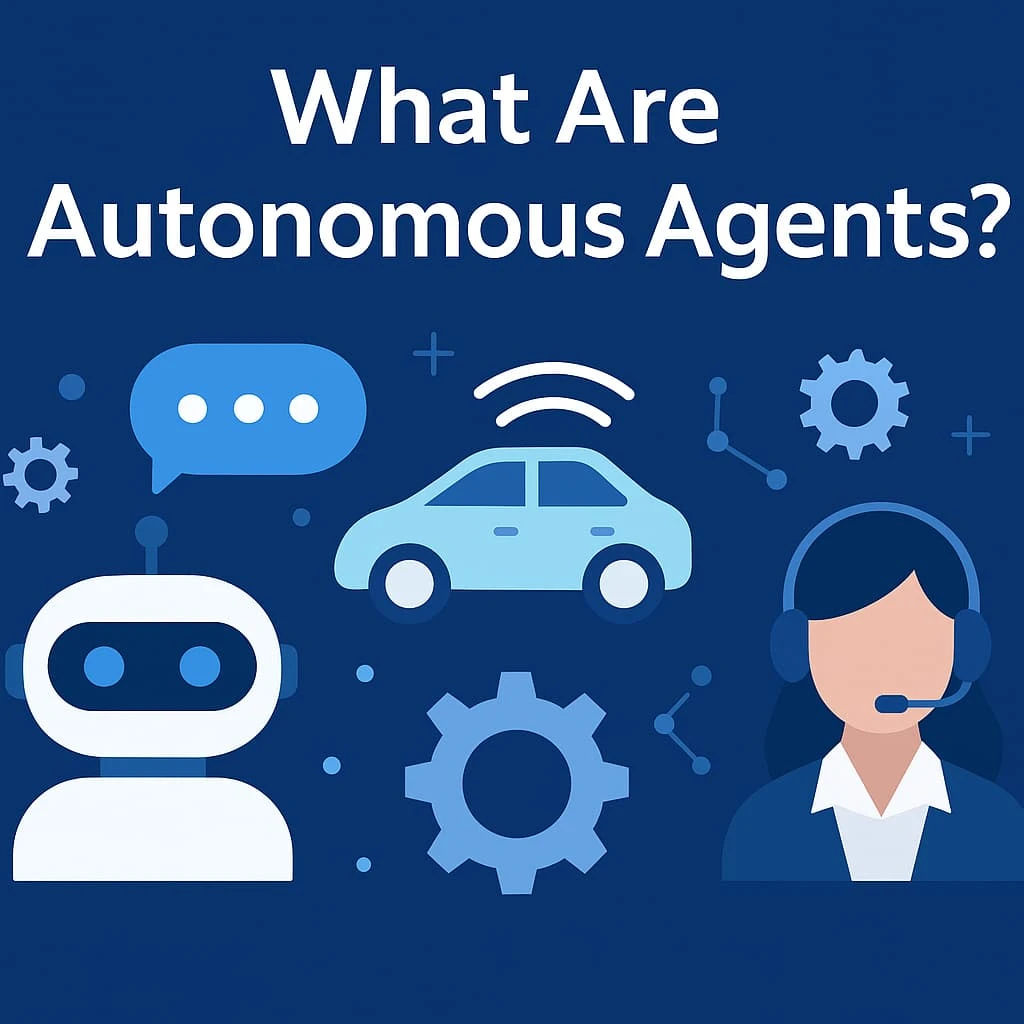
What Are Autonomous Agents? How They Work, Real Use Cases, and What’s Next
Learn what autonomous agents are, how they work, and where they’re used in real-world applications like customer service, HR, sales, and logistics.
Autonomous agents are no longer just futuristic concepts from sci-fi—they’re here, and they’re transforming how businesses operate. From streamlining customer service to optimizing logistics and recruitment, these intelligent systems are becoming central to modern enterprise workflows.
But what exactly are autonomous agents? How do they work, and why are they such a big deal in 2025?
Let’s break it down in clear, simple terms.
What Is an Autonomous Agent?
An autonomous agent is a software system that can make decisions and take actions on its own to achieve a specific goal—without needing constant human input.
Unlike traditional automation, which runs on fixed rules, autonomous agents can adapt to changing environments in real time. They observe, decide, and act—just like a human, but powered by artificial intelligence.
These agents can:
- Interact with humans via voice or text
- Learn from past interactions
- Make context-aware decisions
- Execute complex tasks across systems or platforms
AI vs Autonomous Agents: What’s the Difference?
While the terms AI agents and autonomous agents are often used interchangeably, there are important differences in their capabilities and levels of independence.
1. AI Agents – The Broader Category
An AI agent is any software that uses artificial intelligence to perceive its environment, interpret input (text, voice, data), and take action to achieve a goal.
They might:
- Respond to customer questions
- Recommend products
- Route support tickets
- Interpret spoken language
However, many AI agents still operate within a set of rules or limited logic, requiring predefined workflows or some degree of human oversight.
Example: A chatbot that answers FAQs based on a predefined knowledge base.
2. Autonomous Agents – A More Advanced Subset
An autonomous agent goes a step further. It can:
- Make independent decisions
- Learn from new data and adjust its behavior
- Operate continuously without human involvement
These agents are designed to handle dynamic, unpredictable environments—making them ideal for high-stakes or complex scenarios like self-driving cars, automated trading, or advanced voice-based assistants.
Example: A voice AI agent that not only answers questions but also books appointments, follows up with leads, and adapts based on past user behavior.
Key Traits of Autonomous Agents
To qualify as an autonomous agent, a system typically must be:
- Perceptive – It gathers data from its surroundings or input sources.
- Goal-Oriented – It’s designed to achieve a specific task or result.
- Decision-Capable – It chooses the best course of action based on logic or learned behavior.
- Independent – It operates with little or no human oversight.
- Adaptive – It improves performance over time through feedback or learning.
Where Autonomous Agents Are Being Used Today
Here’s how businesses are using autonomous agents across real-world functions:
1. Customer Support
AI-powered agents now handle support tickets, answer FAQs, and route complex issues to human agents when needed. Whether over voice or chat, they reduce wait times and scale support 24/7.
Example: A telco company uses a voice-based AI agent that resolves 65% of customer queries without human assistance.
2. Human Resources
Autonomous recruitment agents can scan resumes, send interview invites, answer candidate questions, and guide new hires through onboarding—without requiring HR teams to intervene.
Example: A recruitment platform deploys an AI agent that screens applications in minutes and automates interview scheduling, saving 40+ hours weekly.
3. Sales & Lead Generation
In sales, AI agents follow up with leads, qualify prospects, answer product queries, and book demos. This ensures leads are never lost, even outside business hours.
Example: A SaaS startup uses an AI sales agent that engages every inbound lead within 60 seconds, increasing conversion rates by 3x.
4. Logistics & Supply Chain
Autonomous agents monitor inventory, track shipments, predict delivery delays, and optimize routes in real time—helping companies avoid bottlenecks and reduce costs.
5. Finance
In trading, autonomous agents monitor stock markets, analyze signals, and execute trades based on pre-set strategies, often faster and more accurately than human traders.
Benefits of Using Autonomous Agents
- Faster Operations: They respond in milliseconds and make decisions instantly.
- Reduced Human Workload: Free up employees from repetitive tasks.
- Scalability: Handle hundreds or thousands of interactions at once.
- Consistency: Deliver error-free, standardized experiences.
- Cost Savings: Lower operational costs while increasing throughput.
Autonomous Agents vs Traditional Automation
Why Now? The Rise of Autonomous Agents in 2025
Several factors are driving the rapid adoption of autonomous agents today:
- Advances in generative AI and NLP
- The rise of voice-first interfaces
- Availability of real-time data processing
- Demand for 24/7, scalable customer and operational support
By 2026, over 70% of digital workers are expected to interact with some form of autonomous agent daily. Businesses that integrate these systems early will have a clear competitive edge.
How to Get Started
Here’s how companies typically begin their journey with autonomous agents:
- Start Small: Deploy an AI chatbot on your website or an FAQ agent for internal use.
- Identify High-Impact Use Cases: Think support, hiring, or lead gen.
- Choose Voice or Text: Voice agents offer real-time efficiency, while chat-based agents excel in multitasking.
- Track ROI & Iterate: Monitor success and expand across functions.
Final Thoughts
Autonomous agents are not just automation—they’re intelligent, proactive digital workers. They make decisions, act on them, and continuously improve.
As AI continues to evolve, autonomous agents will become central to how modern businesses run—helping them move faster, serve better, and scale smarter.
If your organization is looking to improve operational efficiency, reduce costs, or simply do more with less—autonomous agents are worth exploring now.